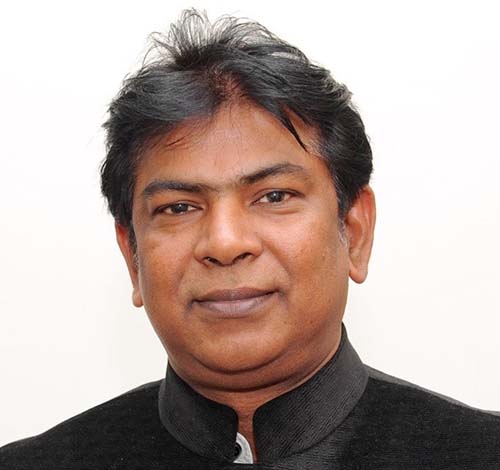By: Prof. Santosh Kumar, Sr. Advisor, NIDM & Sr. Consulting Editor-ICN
NEW DELHI: Disaster is man-made or natural? Who is responsible for disaster? People, govt, corruption or nature? TV and social media are accusing one another. This is not a new phenomenon. It happens after every disaster in India and across the globe. Recent disaster in Turkey when it was hit by a great earthquake , TV and social media were flooded with such debates. India is currently witnessing huge floods in Himachal Pradesh, Uttarakhand, Punjab, Haryana and Delhi ( after 48 years). Many more to come as monsoon is progressing and the danger of floods may knock anytime. In the recent past prominent disasters have been cyclone Amphan, Fani, Kerala floods, Assam and Bihar floods. Urban flooding has been noted in Chennai, Delhi, Mumbai ,Bengaluru, Patna and many more. In the aftermath of disaster there has always been a hue and cry for the post disaster funding for recovery. Most of the time in India in the absence of funds long term recovery is unattended. This has a larger implications on the growth and ultimately on the lives of the poor.
In the process of large visible response ( pre disaster risk reduction is invisible) by NDRF, integrated command of Indian Army, Local police, SDRF, local administration and in some cases international support and huge support of local communities and civil societies, need for pre disaster risk reduction gets marginalised or forgotten. For a very long time despite the provision of disaster risk mitigation funding there was no allocation made for ex-ante risk reduction. Recently in the year 2021 Govt of India accepted the recommendation of 15th finance commission. This has been a historical event for disaster risk reduction with exclusive integration and allocation of ex-ante risk reduction and ex-post long term recovery. Finance commission allocation can be seen below.

NDRMF-National Disaster Response and Mitigation Fund, NDRF-National Disaster Response Fund, NDMF-National Disaster Mitigation Fund
These allocations may not be enough for the size, scale and intensity of disasters in the vast country like India but whatever small it may be attempts have to be taken by the states to take proactive measures for reducing disaster mortalities and economic losses. There are many other financial instruments can be roped in for building resilience. A few innovative tools could be following;
Blended financing for disaster risk management refers to the combination of various financial tools and mechanisms to address the costs and challenges associated with managing and recovering from disasters. Integrating bond, insurance, monetary, and fiscal tools can create a comprehensive approach to financing disaster risk management. Here’s a breakdown of each component:
Bonds: Disaster risk bonds are financial instruments that provide coverage against the financial losses incurred due to disasters. These bonds are typically issued by governments, international organizations, or private entities. Investors purchase these bonds, and in the event of a disaster, the bond proceeds are used to provide immediate funding for relief and recovery efforts.
Insurance: Disaster insurance involves transferring the risk of a potential disaster to an insurance company in exchange for a premium. Governments, businesses, and individuals can purchase insurance policies to protect themselves against losses caused by disasters. Insurance can cover various aspects, including property damage, business interruption, and loss of life. By integrating insurance, the financial burden of disasters can be shared and managed more effectively.
Monetary tools: Monetary tools refer to the measures taken by central banks and monetary authorities to manage the money supply, interest rates, and overall economic stability. In the context of disaster risk management, monetary tools can be used to provide liquidity and stabilize the economy during and after a disaster. Central banks can lower interest rates, provide emergency funding, or implement other measures to ensure financial stability and support recovery efforts.
Fiscal tools: Fiscal tools involve the use of government policies and budgetary measures to allocate resources and finance disaster risk management. Governments can allocate funds in their budgets specifically for disaster preparedness, response, and recovery. They can also provide tax incentives or subsidies to encourage private sector investments in disaster risk reduction. Additionally, governments can utilize public-private partnerships to leverage private sector expertise and resources in disaster management.
Integrating these tools allows for a comprehensive and multi-layered approach to financing disaster risk management. By diversifying the sources of funding and risk-sharing, the financial impact of disasters can be better managed, and resources can be allocated more efficiently to reduce vulnerabilities and enhance resilience. It is important for governments, international organizations, and private stakeholders to collaborate and develop innovative financial solutions to address the complex challenges of disaster risk management.
Blended financing for disaster risk management, integrating bond, insurance, monetary, and fiscal tools, has been implemented in various countries around the world. Here are some international examples:
International Experience
Caribbean Catastrophe Risk Insurance Facility (CCRIF): The CCRIF is a regional insurance facility that provides participating Caribbean countries with parametric insurance coverage against hurricanes, earthquakes, and excess rainfall. It offers a quick payout mechanism based on predefined triggers, allowing countries to access funds rapidly for immediate response and recovery efforts.
Pacific Catastrophe Risk Assessment and Financing Initiative (PCRAFI): PCRAFI is a program that provides catastrophe risk insurance coverage to Pacific Island countries. It uses risk modelling to determine insurance premiums and offers post-disaster pay-outs to help countries recover from natural disasters.
World Bank’s Catastrophe Bonds: The World Bank has issued catastrophe bonds, such as the Caribbean Catastrophe Risk Insurance Program (CCRIP) and the Pacific Catastrophe Risk Insurance Pilot (PCRIP). These bonds transfer the risk of natural disasters to capital markets, allowing the World Bank to provide quick financing for disaster recovery efforts in the respective regions.
Asian Development Bank’s (ADB) Disaster Risk Financing Initiatives: ADB has supported various countries in the Asia-Pacific region with disaster risk financing initiatives. For instance, in the Philippines, ADB provided a contingent credit line that can be quickly disbursed in the event of a disaster, ensuring immediate access to funds for response and recovery.
Parametric Insurance in Mexico: Mexico has implemented a parametric insurance program called FONDEN (National Disaster Fund). The program uses predefined triggers and parametric models to determine insurance payouts based on the intensity of natural disasters, such as hurricanes and earthquakes. It provides timely funding for disaster response and recovery efforts.
India’s case
These examples demonstrate how blended financing approaches have been utilized to manage disaster risk in different regions. By combining bonds, insurance, monetary tools, and fiscal measures, countries and international organizations can improve financial preparedness, enhance response capacities, and facilitate faster recovery after disasters.
In India, there is significant scope for the application of blended financing for disaster risk management by integrating bond, insurance, monetary, and fiscal tools. India is highly vulnerable to various natural hazards, including cyclones, floods, earthquakes, and droughts, which can cause substantial economic and human losses. Here are some potential areas where blended financing can be applied in India:
Catastrophe Bonds: India can explore the issuance of catastrophe bonds to transfer the risk of large-scale disasters to capital markets. These bonds could provide financial support for post-disaster recovery and reconstruction efforts. By accessing international investors, India can diversify its sources of funding and reduce the burden on the national budget.
Parametric Insurance: Parametric insurance can play a crucial role in covering specific risks in India. For instance, index-based insurance products can be designed to provide quick pay outs based on predefined triggers, such as rainfall levels, to support farmers in case of droughts or floods. This can help protect livelihoods and provide a safety net for vulnerable communities.
Monetary Tools: India’s central bank, the Reserve Bank of India (RBI), can utilize monetary tools to support disaster risk management. The RBI can implement measures such as lowering interest rates, providing emergency liquidity assistance to affected sectors, and ensuring the stability of the financial system during and after disasters. These actions can help mitigate the economic impact of disasters and facilitate faster recovery.
Fiscal Measures: The Indian government can allocate dedicated funds in its annual budget for disaster risk management, including preparedness, response, and recovery activities. Additionally, fiscal incentives and subsidies can be provided to encourage private sector investments in disaster risk reduction and resilience-building measures. Public-private partnerships can also be leveraged to share resources and expertise.
Risk Financing Mechanisms: India can establish risk financing mechanisms at the national and sub-national levels, including catastrophe insurance pools or funds. These mechanisms would pool risks from various stakeholders and provide financial support during emergencies. Collaboration with international organizations, such as the World Bank and Asian Development Bank, can help in designing and implementing such mechanisms.
It is worth noting that India has taken steps towards integrating some of these approaches. For instance, the Pradhan Mantri Fasal Bima Yojana (PMFBY) is a government-supported crop insurance scheme that incorporates elements of parametric insurance to protect farmers from crop losses due to natural disasters.
Overall, by adopting blended financing strategies, India can enhance its disaster risk management capabilities, ensure more efficient and timely access to funds, and promote sustainable recovery from natural disasters. Collaboration between the government, financial institutions and international partners is key to implementing these measures effectively.




